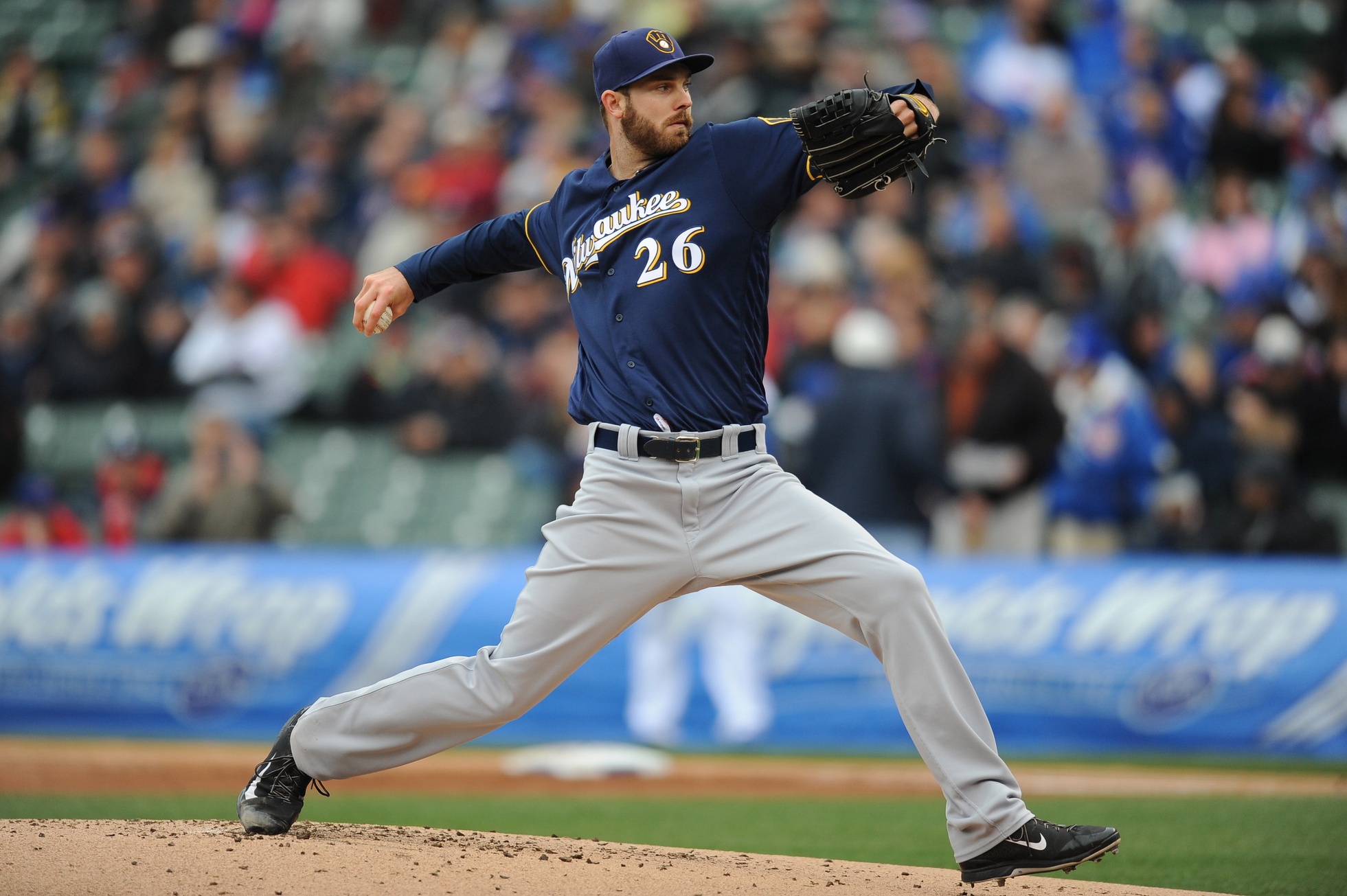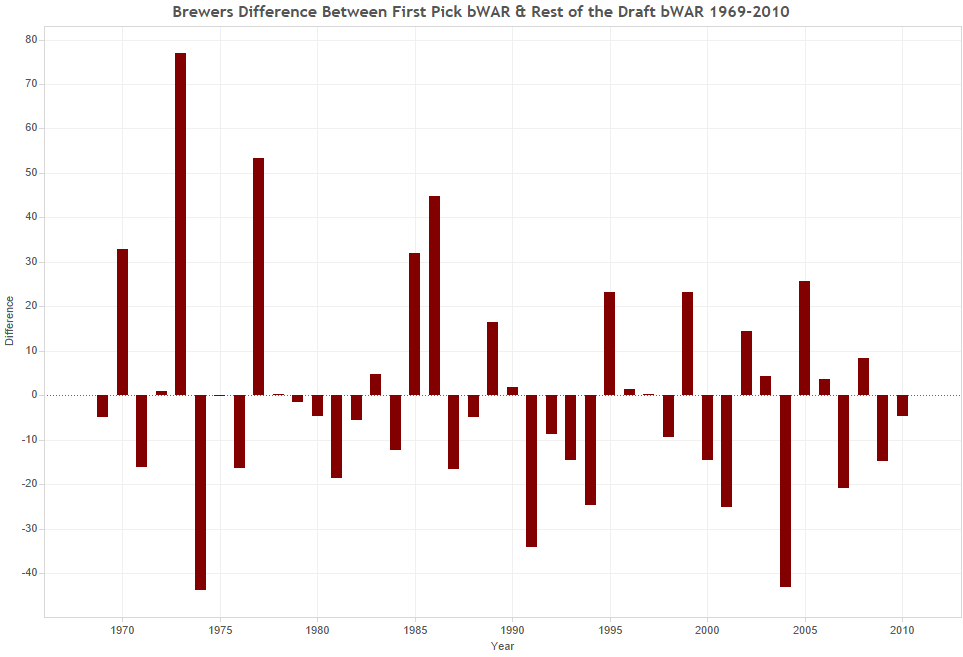The storm has passed, the dust has settled, the draft is finally over. With their first pick, the Brewers selected Corey Ray, an outfielder from Louisville. We don’t know what Ray will become, but thus far, a number of people have been praising this selection including Christopher Crawford of BaseballProspectus, who described him as his favorite player in the draft. On The Strike Zone podcast, Crawford said this about Ray: “He can do a little bit of everything and there’s really no weakness to his offensive game. He’s the type of guy who’s going to hit .280-.300, hit 15-25 homers, steal 25-35 bases, plays good defense in a corner outfield, maybe even center field… This is a kid who has an incredibly high floor, but also that rare combination of the high floor and the really high ceiling. It would not shock me at all if Corey Ray was the best player to come out of this draft and he’s also a really good kid.” Crawford continued, “That’s the guys that I come out of this draft thinking yeah, that’s going to be the guy we look back and wonder how he fell to five.”
It’s also important to note that some have criticized a few of the top selections. Some have suggested that some teams didn’t pick the best players in order to sign players below slot. This would then allow the team to spend more on players who might fall in the draft. The criticism is basically that teams, especially with their first round picks, should pick the best players.
The first pick in the draft is extremely valuable. It’s where you hope to draft your future star. But, there are 40 rounds in the draft, and the first pick isn’t always the best selection. Just take the 2009 draft as an example for the Brewers. With their first pick in the first round, they selected Eric Arnett, who has never played in the big leagues. In that draft, however, the Brewers also selected Khris Davies in the seventh round, Scooter Gennett in the 16th round, and Mike Fiers in the 22nd round. All of whom have played significant time in the big leagues. I, therefore, wondered how often was the first pick the best pick in the draft for the Brewers?
First, I gathered draft data from baseball-reference, and excluded any player that didn’t sign with the team, and played at least one game in the majors. Since I gathered the information from baseball-reference, I used their bWAR model. I then looked at the amount of bWAR that was accumulated by round. I stopped at 2010 because players after that year haven’t really made an impact in the big leagues. We don’t yet know how they will turn out.
First round selections for the Brewers from 1969-2010 have been worth 511.5 bWAR. The next highest is the second round selections who have been worth 96.3 bWAR. Basically, teams know what they’re doing. A first round selection is, as Neil Paine would say, “orders of magnitude” more valuable than any other pick in the draft. That’s usually where you’re going to find the best player.
That said, a first round pick can be hit or miss. For the Brewers, they’ve drafted a couple of Hall of Famers in the first round with Paul Molitor and Robin Yount. Yet, 35.71% of their first round selections have never made it out of the minor leagues. Think of it this way, in the next three years, it’s possible that only one of the players the Brewers will draft in the first round will make it to the majors. That doesn’t even include the chances of them being productive.
In many ways, that’s a scary feeling, but thankfully, this also means that when the Brewers get it right, they really get it right. More so than any other pick in the draft. For example, I compared the percentage of times the Brewers first round pick is better than the best overall pick the Brewers had in that particular draft (not including first round picks of course), in terms of bWAR value. With this method, the Brewers first round picks were better 45% of the time. The incredible part is that in total accumulated WAR first round picks were worth 502 WAR while the other best picks (not including first round picks) were worth 396.7 WAR, furthering the notion that the first round pick is extremely valuable.
But, let’s advance this notion. I then compared the value by bWAR of the first round pick, compared to the cumulative value of every other pick in the Brewers draft. The first pick in the Brewers draft was more valuable by bWAR 43% of the time than every other pick combined. Think about that for a moment: One pick, one single pick, usually produces more value 43% of the time; that’s more value from a single pick than 39 or more other picks combined! Even more astounding, when I combined all of the bWAR values for first round picks they were naturally worth 502, compared to 492.8 for every other pick. That’s right, from 1969-2010, the Brewers first round selections have produced more value than all other draft picks combined. In other words, 39 picks were worth more than the other 1651 selections! And, I didn’t even count the first round compensation picks with the first round selections, which is why the first round selections here produced less value than the overall first round values which I displayed in the first graph.
Here’s how the information looks from a year to year basis.
The draft is hard, it’s really, really hard. Hundreds of picks are made every year and very few of them pan out. The problem is that there’s a huge amount of randomness. Player development also plays a big factor in determining a player’s future success. That said, at least when it comes to the Brewers, a first round selection can often make or break the draft. It’s usually where a team will find a future star, and even if they don’t all pan out, and they won’t, the majority of them won’t pan out, but it still remains the most important pick nonetheless. Plus, for a rebuilding team, getting it right and wrong can be the difference between a quick rebuild and a lengthy one.
So, as Michael Baumann suggested, if you’re the Astros and you can take advantage of a market inefficiency, then go ahead and do it. But if everyone is going after the new market inefficiency, then maybe the best move is to simply take the best player on the board.



Really good article. Did you notice a 1st round tier? Such as top ten picks are 80% successful, the rest of them 30%. Was there a big disparity for P vs position players.?
Thanks! Certainly, of the Brewers 502 first round bWAR, 410.5 or 81.77% of that was from picks 1-10 . Pitchers also only accounted for 13.4% of the Brewers first round bWAR.